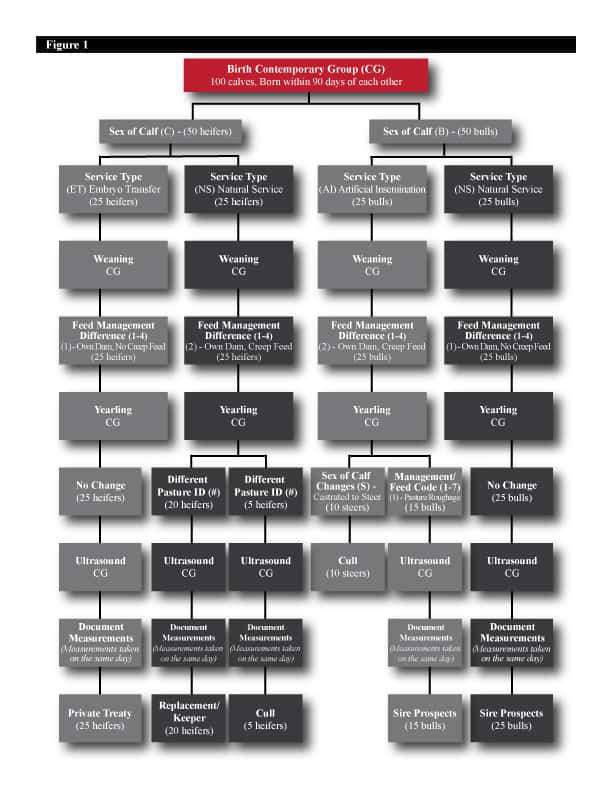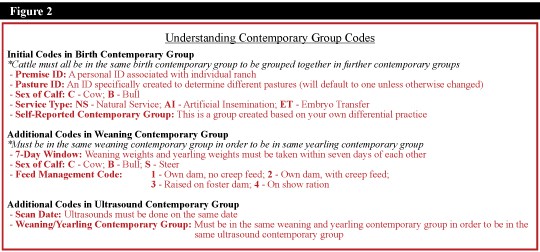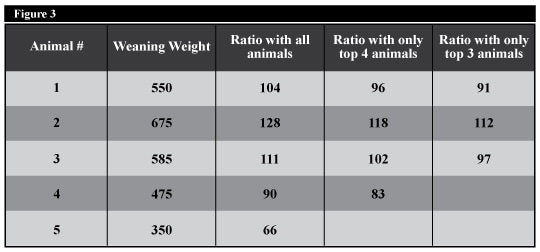Contemporary Grouping 101 – FRONTLINE Beef Producer Fall 2016
Contemporary Grouping 101, by Field Service Representative Lauren Prine
With the wagon comes the wheels. The ideology of the wheel stands for a practice that has already been set in motion. Here at International Brangus Breeders Association (IBBA), we’re not trying to reinvent our EPD program; we want to improve our practices and data accuracy. IBBA members’ can help by accurately recording and entering contemporary group data.
Contemporary groups are, “a group of cattle that are of the same breed composition and sex, are similar in age, and have been raised under the same management conditions,” as defined by Beef Improvement Federation. “More simply put, a contemporary group is a group of animals that have had an equal opportunity to perform.”
The use of contemporary groups helps our industry to progress by keeping records based on factual data, without the influence of personal biases. Sometimes breeders go through the process of making contemporary groups, and are unsatisfied with the outcome. Even if your results are unsatisfactory, don’t skew your data by only recording the calves with the highest performance. By only recording animals with a high genetic performance, breeders create a biased herd evaluation.
Every calf must have recorded data; even calves born dead must be accurately weighed at birth. Reporting data on all calves will not only help identify poor-producing parents, it will also help establish accuracy. This accuracy will give both the dam and sire credit for their genetic merit, of which they are deserving. As more data is available on any given animal (eg. dam, sire, etc.), the EPDs improve in accuracy. If both the dam’s and sire’s genetic evaluations have been recorded, the calf is likely to receive more credit. Contemporary groups are set up to create the most unbiased and most uniform data available.
Understand that calves with unequal environmental conditions must be assigned to different contemporary groups. It is important to understand that groups can only decrease in size. As calves grow older, groups will decline in size, based on factors such as breeder management practices, self-reported grouping, injury, sickness, and even death. Carefully map out a planned process to ensure you don’t create too many or too few groups. Also, keep in mind, if you don’t have enough animals to compare against each other, your data can be overly inflated or underestimated.
Here is a list of the information to be included in each type of contemporary group, in chronological order:
- Birth Contemporary Group: Premise ID, Pasture ID, Sex of Calf, Service Type, and Self-Reported Contemporary Group
- Weaning Contemporary Group: Premise ID, Pasture ID, Seven-Day Window for Weights, Sex of Calf, Feed/Management Code, and Self-Reported Contemporary Group
- Yearling Contemporary Group: Premise ID, Pasture ID, Seven-Day Window for Weights, Sex of Calf, Feed/Management Code, Weaning Contemporary Group, and Self-Reported Contemporary Group
- Ultrasound Contemporary Group: Premise ID, Pasture ID, Scan Date, Sex of Calf, Feed/Management Code, Birth Contemporary Group, Weaning Contemporary Group, Yearling Contemporary Group, and Self-Reported Contemporary Group
Please reference Figure 2 to understand contemporary group codes.
IMPORTANT THINGS TO KEEP IN MIND:
- Premise IDs are determined at birth. If you decide to relocate your cattle to another cattleman’s pasture, feedlot, or location, then the premise ID for those cattle must be changed in the system, too. The changed premise code for your cattle should match the premise ID of the new herd to unify them into one contemporary group.
- Weaning weights for all animals in a group must be captured and reported within a seven-day window. Any weight taken outside of the seven-day window will be placed into a different contemporary group. Yearling weights for all animals in a group must, also, be taken and entered within a seven-day window to be considered for the same contemporary group.
- Ultrasound scans for all animals in a group must be performed and recorded on the same day. However, ultrasound weights should be captured on the same day the animal is scanned. If you weigh calves outside of those seven days from the scan date, they will be placed into a separate contemporary group.
There is significant negative impact on the animals’ contemporary-group ratios when only selective data is submitted. As shown in Figure 3, note that animal 1has a 104-weaning-weight-ratio when properly placed in a contemporary groups with his other four mates. The ratio drops to 96 and 91 when one or two, maybe respectively, animals are left out of the contemporary group. The higher the ratio, the better the impact for that trait in the genetic evaluation for EPD calculations. Anything over 100 is above average and preferred in the analysis.
As the wheels of formulating contemporary groups continue moving, it’s important to understand how all the wheels play an important role in the propelling the Brangus breed toward progress. With improved contemporary grouping and more data collection, Brangus will be able to create a superior genetic selection tool (EPDs) that continues to compete at industry standards.
Member records are stored on the IBBA website and other online resources. The form in our online portal, which members use to register animals, is comprised of drop-down menus and other input fields. A new edition of the IBBA Breeder Handbook will be released soon to help members stay informed and better understand new opportunities not only for their operation, but the breed as a whole.
Download PDF version: FBP_Fall2016 prine_ContemporaryGroups
ABOUT THE AUTHOR: LAUREN PRINE
IBBA Field Service Representative Lauren Prine is a native of San Antonio, Texas. Prine earned her Bachelor of Science degree in Agricultural Education, in 2013, from Tarleton State University, in Stephenville, Texas. She held the position of Agricultural Science Teacher at both Petersburg High School and Steele High School prior to joining the IBBA.





